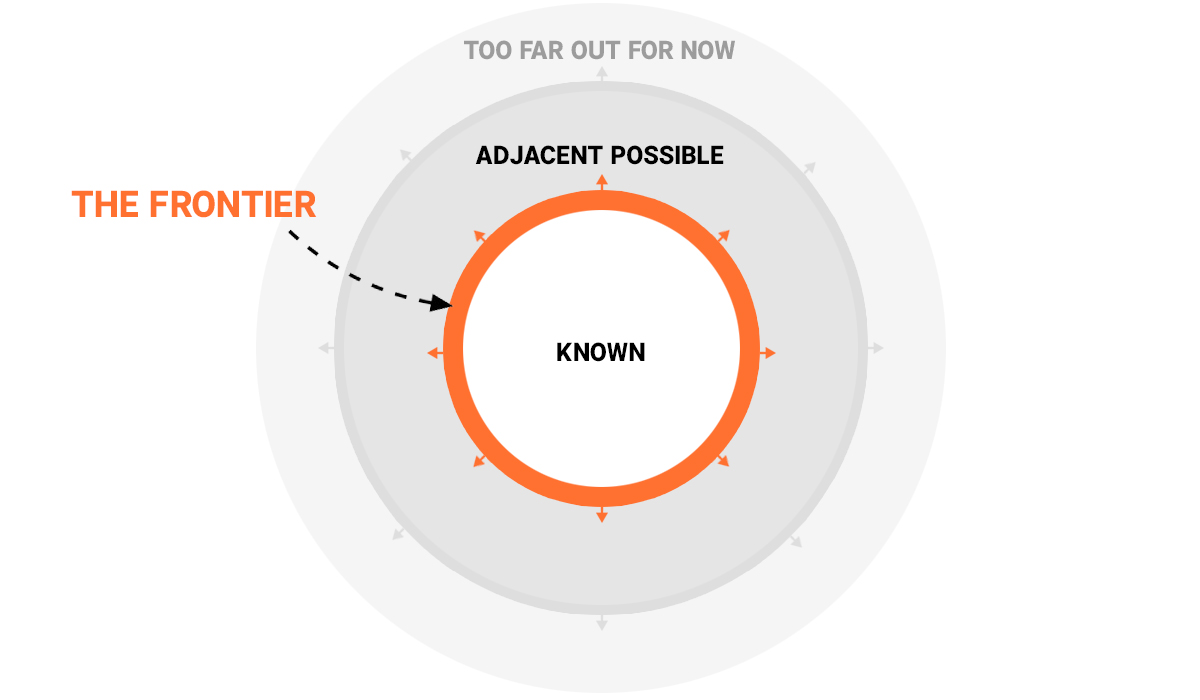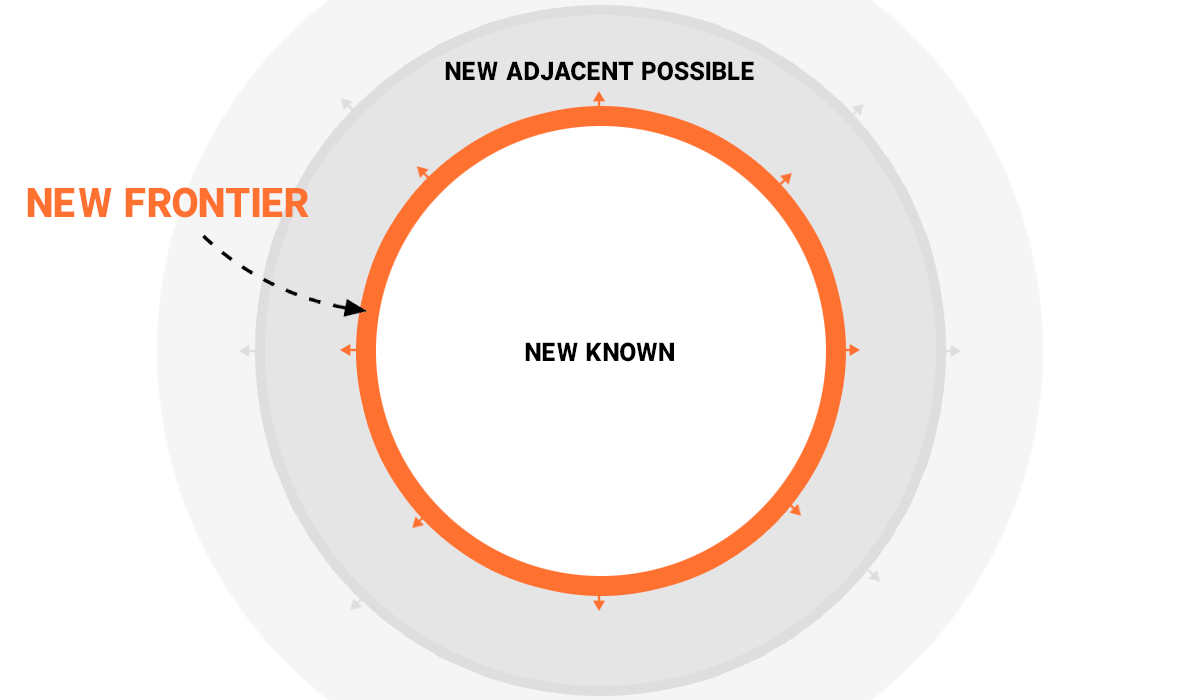Adventure has a nice ring to it. The thrills. The rush. The magic. It’s a prospect that tickles the senses.
But in daily life, it’s easy to feel deprived of adventure. Routine tasks, unappreciative bosses, and overcrowded schedules zap the thrill out of the daily grind.
This state of affairs, however real it might seem, is an illusion.
Opportunities for growth and adventure are everywhere — if you know where to look, that is.
If you raise your gaze, there’s a special place a bit further beyond. It’s a place where adventure and growth can always be found, no matter the circumstance.
That place is the frontier.
The frontier and the adjacent possible
The frontier is the edge. It’s the current limit of your abilities. Everything within the boundaries of the frontier is known, expected, and secure. Everything beyond the frontier is new, unknown, and uncertain.
Adventure takes place at the frontier. It happens in a dance between the known and the unknown.
Steven Johnson, innovation expert and author, has popularized a term called the adjacent possible.
The adjacent possible is whatever lies just beyond the limits of your current abilities. When you’re standing at the frontier, the adjacent possible is what’s just within your grasp, if you really reach for it.

The frontier is not a static, fixed boundary. Instead, it’s expandable. Each step forward into the adjacent possible expands the frontier. And as the frontier expands, so does the adjacent possible, too.

Even though breakthroughs seem like big leaps at the time, they’re not. Instead, innovation is the result of a gradual process of leaning into the frontier, and expanding the adjacent possible — one step at a time.
No frontier? Then no growth, and no adventure.
Finding your frontier
So you’re longing for adventure. The first task is to find the frontier. It’s the composed of the following:
Frontier = The Known (old, safe, secure) + The Unknown (new, uncertain, scary)
The frontier is a combination of the known and the unknown. It’s stability and uncertainty, security and panic, all at once.
The frontier is when you feel desire and fear at the same time. It’s where “I want to…” meets the “…but…”.
It’s what the poet David Whyte calls beautiful trepidation: “the sense of something about to happen that you’ve wanted but that you’re scared to death of actually happening.”
Once you’ve found that sense of beautiful trepidation, you know you’re at the frontier. Then the second step is to be at the frontier.
Usually we can sense where the frontier is, but we shy away from it. Maybe it’s too frightening. It might seem overwhelming. Or perhaps we’re afraid of leaving what we know behind.
Whatever the resistance, it’s all a fear of being fully present at the edge. It’s a fear of showing up and being fully visible in the face of the unknown.
At the edge, we’re exposed to the elements. This applies to all of us, even leaders. “One of the powerful dynamics of leadership,” says David Whyte, “is being visible. One of the vulnerabilities of being visible is that when you’re visible, you can be seen; and when you can be seen, you can be touched; and when you can be touched, you can be hurt.”
The frontier demands all of us. It’s nothing you can shy away from. Only by standing there, and being there with it all, are you truly at the cliff edge of existence.
Once you’ve finally collected the courage to stand at the edge and peer into the abyss, the final step is to lean into the frontier.
The first moments of leaning in will be terrifying, strange and uncomfortable. But because of the fear it creates, it’s also exhilarating. It makes you come alive. It’s a cocktail of danger, thrills, fun, terror, and excitement all at once.
You can let the fear and resistance stop you. Or you can use it a signpost of where to go, of where to lean in. Once you lean in far enough, momentum and gravity will take care of the rest.
Find. Stand. Lean.
Practice for your future self
Sometimes the frontier is clearly marked, but other times it’s hidden from view. Either way, it can always be accessed, even in the dullest of circumstances.
If you’re facing an annoying colleague, you have several options. You can sigh and not listen. You can react with anger, irritation and frustration. Or you can use the interaction as an opportunity to lean into the frontier by practicing empathy, patience and leadership.
Every moment presents an opportunity to practice. Practice being more calm. Practice being more aware. Practice being more empathetic. Practice being more risk-taking. Practice being more integrative.
Each time you practice leaning into your edge and you persevere, you’re expanding your range of abilities. You’re expanding the adjacent possible. And with that expansion, you’re creating more opportunities and possibilities for the future.
Your future self is the result of every individual action you take today. So treat your future self with respect. Find the frontier in every moment. Dare to be fully present at that cliff edge. Lean into it and expand the adjacent possible. And watch as new worlds emerge.
Sounds like an adventure to me.
